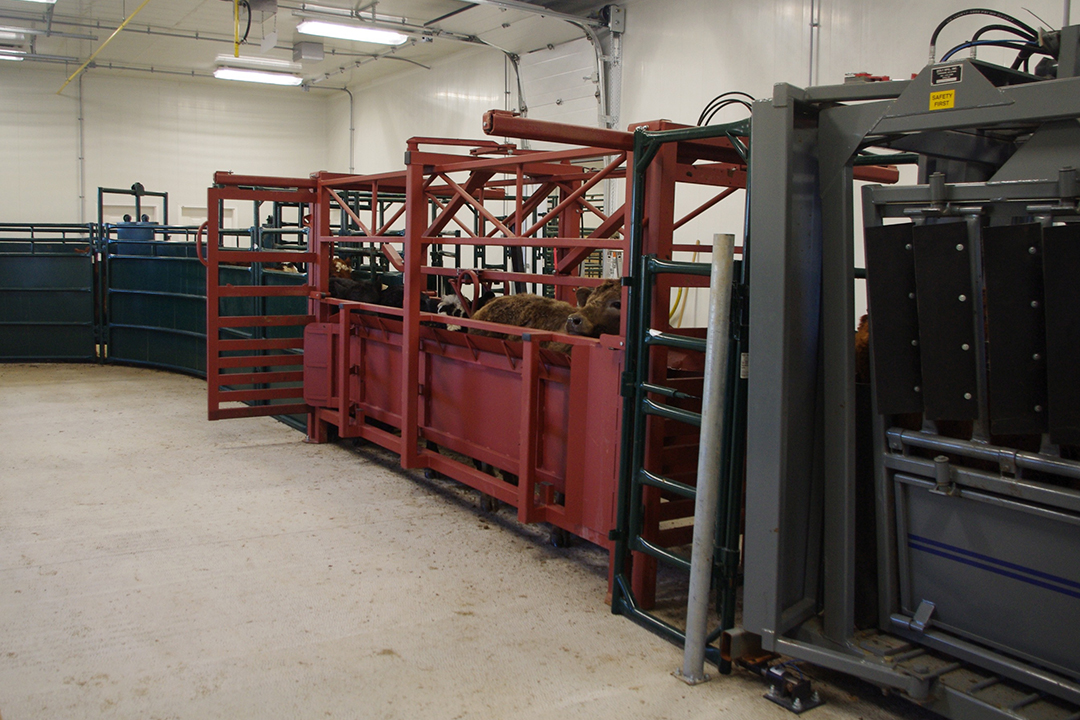
Boehringer Ingelheim forges partnership with LFCE
The University of Saskatchewan has announced a five-year partnership and $250,000 contribution from research-driven pharmaceutical company Boehringer Ingelheim (Canada) Ltd. that will support advancements in innovation and leadership at the Livestock and Forage Centre of Excellence (LFCE).
The partnership will support cow-calf research and critical data collection to support animal safety and animal handling techniques at the newly named Boehringer Ingelheim Cattle Handling and Teaching Unit. The company will also provide the LFCE with technical expertise related to research protocol review and research modernization in the areas of pain management, animal well-being and disease prevention.
“We are grateful for Boehringer Ingelheim’s investment in the innovative work of this unique-in-Canada collaborative research and training centre,” said USask Vice-President Research Karen Chad. “It’s a sign of how important this new multi-disciplinary centre is to the entire livestock production chain and ultimately to the end consumer, as we work with our many partners to advance sustainable cattle production through research.”
The Boehringer Ingelheim Cattle Handling and Teaching Unit is part of the LFCE’s Forage and Cow-Calf Research and Teaching Unit located south of Clavet, Sask., and plays a pivotal role in cow-calf research and education, said LFCE director Kris Ringwall.
“All research is tied to data,” said Ringwall. “Every year, data on hundreds of cows and calves will be collected using the equipment in this multi-purpose unit. That data will then be used to improve cow-calf operations in Saskatchewan and beyond.”
The cattle handling area is equipped with a hydraulic alley and handling chute designed to minimize the need for people to move the cattle through the chute. This improves safety for the animals as well as for the researchers, students and animal technicians, he said. USask students will also learn proper animal handling techniques through observation and hands-on experience.
Every animal at the cow-calf unit will, at one point, be evaluated using this equipment. This system will allow for weighing, examination, sample collection, vaccinations and treatments. In addition, if a bull, cow or calf is sick, it will be moved into this area in order for a USask veterinarian to examine the animal.
The $38-million LFCE, officially opened last fall, is a partnership between USask, the livestock and forage industries, and the Saskatchewan and federal governments.
“We are proud to support the Livestock and Forage Centre of Excellence and what it represents for the future of agriculture,” said Susan Blair, Boehringer Ingelheim Canada’s Executive Director of Animal Health.
"Through the development of future leaders and advancements in research into animal welfare and disease prevention, the LFCE will help meet the needs of Canadian producers and consumers, while also benefitting the global agriculture industry.”
Founded over 130 years ago in Ingelheim, Germany, the family-owned company is one of the top 20 companies in the pharmaceutical industry. The Canadian headquarters of Boehringer Ingelheim was established in 1972 in Montreal, Quebec and is now located in Burlington, Ontario, employing approximately 600 people across Canada.
The LFCE encompasses all aspects of beef cattle research into one entity, providing researchers, faculty, students, industry and producers with a broad-based platform for research, teaching and extension activities. It brings together three distinct research units that link together the livestock and production chain: the Forage and Cow-Calf Research and Teaching Unit, the Beef Cattle Research and Teaching Unit located south of Clavet, Sask., and the Goodale Farm located southeast of Saskatoon.
The Boehringer Ingelheim donation builds on industry contributions to the centre made by A&W Canada, the Saskatchewan Cattlemen’s Association, and Farm Credit Canada.

